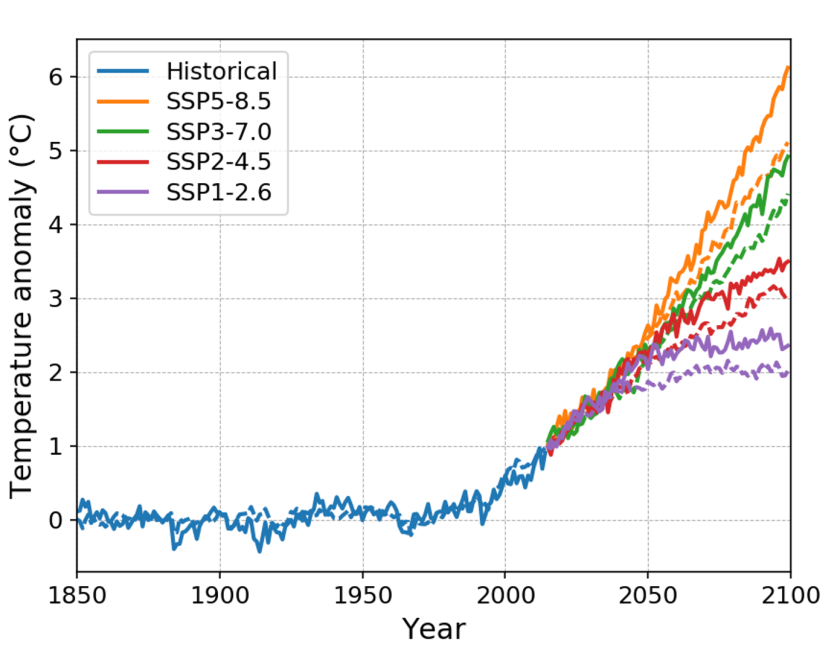
May 2025
CMIP6 GLOBAL CLIMATE MODELLING
Global Climate Models (GCMs) are important tools for understanding climate change. The Coupled Model Intercomparison Project (CMIP) is an international climate modelling coordination effort that is a vital resource for climate research and for making projections of the future climate for decisionmakers. It involves GCMs from numerous countries around the world. The CMIP effort spans several decades, from early more informal science collaborations through to the latest iteration phase 6 (CMIP6).
Throughout 2015-2021 CMIP6 brought together simulations of the most recent generation of GCMs. The CMIP6 simulations were a key input to the Intergovernmental Panel on Climate Change (IPCC) Sixth Assessment Report. Climate projections for Australia based on CMIP6 GCMs are being created by various Australian Federal and State agencies. Some CMIP6 climate projections data generated by the Australian Climate Service are available from this website.
Find out more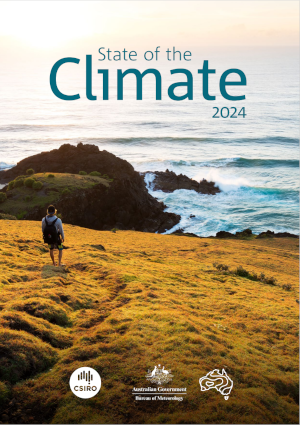
December 2024
State of the Climate Report 2024
This eighth biennial State of the Climate report draws on the latest climate research, encompassing observations, analyses and projections to describe year-to-year variability and longer-term changes in Australia's climate.
The report is a synthesis of the science informing our understanding of climate in Australia and includes new information about Australia's climate of the past, present and future. The science informs a range of economic, environmental and social decision-making by governments, industries and communities.
Find out more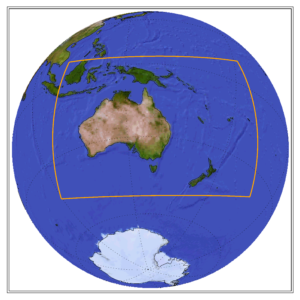
May 2025
NEXT GENERATION CLIMATE PROJECTIONS FOR AUSTRALIA
A major development in Australian climate model projections since the original release of Climate Change in Australia in 2015 is the running of a comprehensive and nationally consistent set of detailed climate model simulations covering Australia. These simulations, which complement global climate modelling efforts, have been run by a variety of Australian Commonwealth, State and Territory agencies, including CSIRO, the Bureau of Meteorology, the Queensland Department of Environment and Climate and the New South Wales Government Department of Climate Change Energy Environment and Water and the Western Australian Department of Water and Environmental Regulation. Coordination of this new modeling was enhanced through the National Partnership for Climate Projections. State government projections portals are being updated with the latest model projections and insights. The Australian Climate Service will use the simulations to underpin a suite of national climate hazard products, including tropical cyclones, heatwaves, fire weather, and heavy rainfall that leads to flooding.
Find out more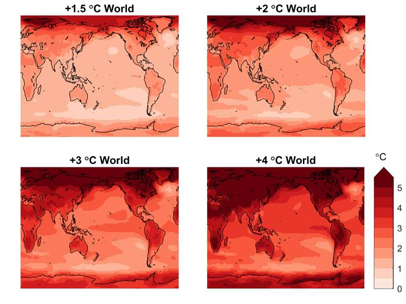
February 2021
Climate Projections for global warming levels
Now we have international goals to keep global warming below 2°C and aim to keep it below 1.5°C since the pre-industrial era, there is interest in what these 'global warming levels' mean for Australia.
This new website section gives projections of changes in temperature and rainfall in Australia for global warming levels at 1.5, 2, 3 and 4 °C, and provides the background and wider context to understand global warming levels.
Find out more
May 2025
Global Climate Tipping Points and abrupt changes
In November 2023, Australian researchers gathered for a workshop on global climate 'tipping points' and how they may affect Australia. Tipping points are abrupt, self-perpetuating and effectively irreversible changes in the state of an element of the Earth system, known as a 'tipping element'. We know there are several 'tipping elements' in the climate system - in ice sheets, sea ice, the overturning ocean circulations, ecosystems, and carbon cycle - that may be triggered by global warming. Triggering any tipping points could mean changes occurring outside our typical reporting of projected change, so can't be ignored. While more research on the likelihood and impacts of triggering tipping points is required, they need to be considered in climate hazard and impact analyses and climate adaptation plans.
Find out more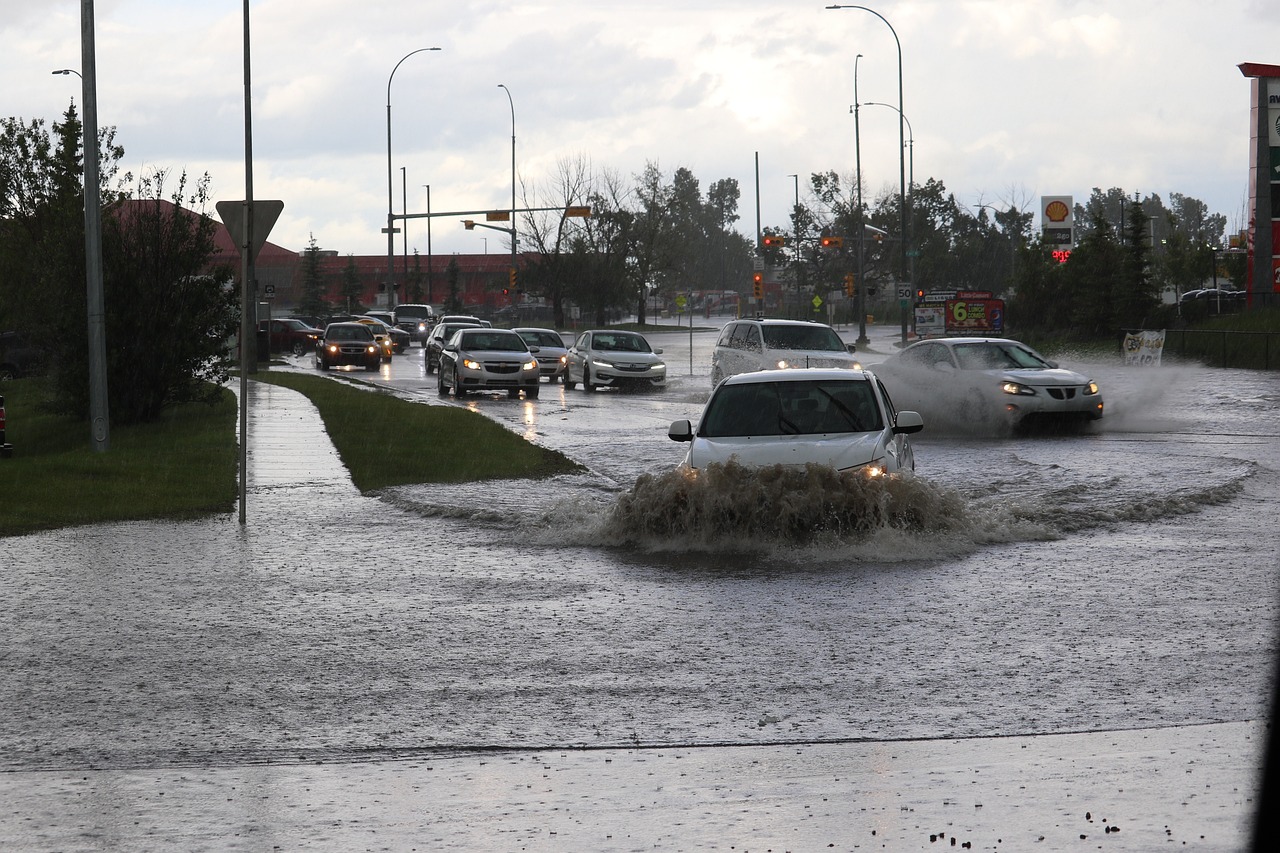
May 2025
Updated engineering guidelines for rainfall and runoff
The intensity of rainfall is increasing due to climate change in many regions. This is especially true for intense rain falling over timescales of minutes to hours. This can increase the risk of flash flooding. The Australian Rainfall and Runoff (AR&R) guidelines are being updated to account for this using the latest scientific evidence.
Find out more
